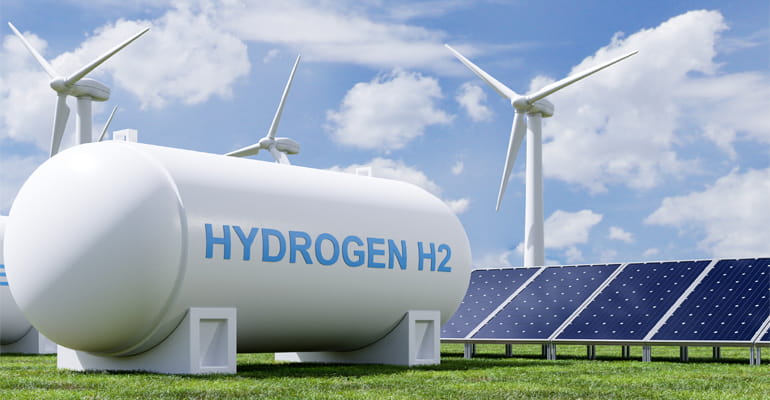
One of the goals that countries all around the world have set for the year 2050 is "decarbonising the planet". To achieve this, decarbonising the production of hydrogen to green hydrogen, is one of the best options as it is currently responsible for more than 2 % of total global CO2 emissions. The question arises of how this is achieved and what will be its impact in the upcoming decades.
These days our way of living needs an extraordinary amount of watts to keep functioning. In 2019, International Energy Agency (IEA) published a report wherein it predicted that demand for energy will increase globally by approximately 25% and 30% by 2040, which in an economy dependent non-renewable resources like oil and coal would mean more carbon dioxide and other harmful gases, exacerbating climate change. However, decarbonising the planet will give us a different world by 2050: one that is more efficient, accessible and sustainable, and driven by clean energies such as green hydrogen.
WHAT IS GREEN HYDROGEN AND HOW IS IT OBTAINED?
Generation of hydrogen — a universal, light and highly reactive fuel — is a chemical process known as electrolysis. In this process, an electrical supply is used to separate the hydrogen molecules from the oxygen in water. If this electric supply is obtained from renewable sources like solar or wind energy, we will, therefore be able to produce green and clean energy without emitting carbon dioxide into the atmosphere.
According to the IEA report, this method of generating green hydrogen would save around 830 million tonnes of Carbon Dioxide emitted annually when this gas is generated using fossil fuels. In the same way, replacing every molecule of grey hydrogen from the planet would require 3,000 TWh/year from new renewable sources — equivalent to the current demand of Europe. However, there are few questions about the viability of green hydrogen because of its high production cost; reasonable doubts that will disappear as the decarbonisation of the earth progresses and, consequently, the generation of renewable energy becomes cheaper.
HYDROGEN AS CLEAN ENERGY
Hydrogen is one of the freely available element in nature. As reported by the IEA, the global demand for hydrogen for use as a fuel has multiplied 3 times since 1975 and reached 70 million tonnes per year in 2018. In addition, it is a clean and green energy source that only emits water vapour and leaves no residue in the air, unlike oil and coal.
Hydrogen has a long-standing relationship with industry. Since the beginning of the 19th-century Hydrogen has been used to fuel cars, airships and spaceships. The decarbonisation of the economy is a task that cannot be delated, as it will give hydrogen more prominence. In addition, as predicted by the World Hydrogen Council, if the production costs of green hydrogen fall by 50% by 2030, we will undoubtedly be looking at one of the fuels of the future.
ADVANTAGES OF GREEN HYDROGEN
Let's go over some of the most important and good points of green hydrogen:
100% sustainable energy: green hydrogen does not emit polluting gases during combustion or production.
Storable: hydrogen is easy to store.
Versatile: green hydrogen can be transformed into electricity or synthetic gas easily.
Transportable: it can be mixed with natural gas and travel through the same gas pipes and infrastructure.
IMPACT OF GREEN HYDROGEN
Hydrogen as a fuel is a reality in many countries like Russia, United States, France, China and Germany. Below is the impact of Green hydrogen:
Electricity and drinking water are the two elements obtained by reacting hydrogen and oxygen in a fuel cell. This process has proved very useful on space missions by providing crews with electricity and water in a sustainable manner.
Compressed hydrogen tanks are capable of storing energy for long periods and are also easier to handle because they are lighter than lithium-ion batteries.
The versatility of Hydrogen allows it to be used in consumption niches which are hard to decarbonise, such as aviation, heavy transport and maritime transport.